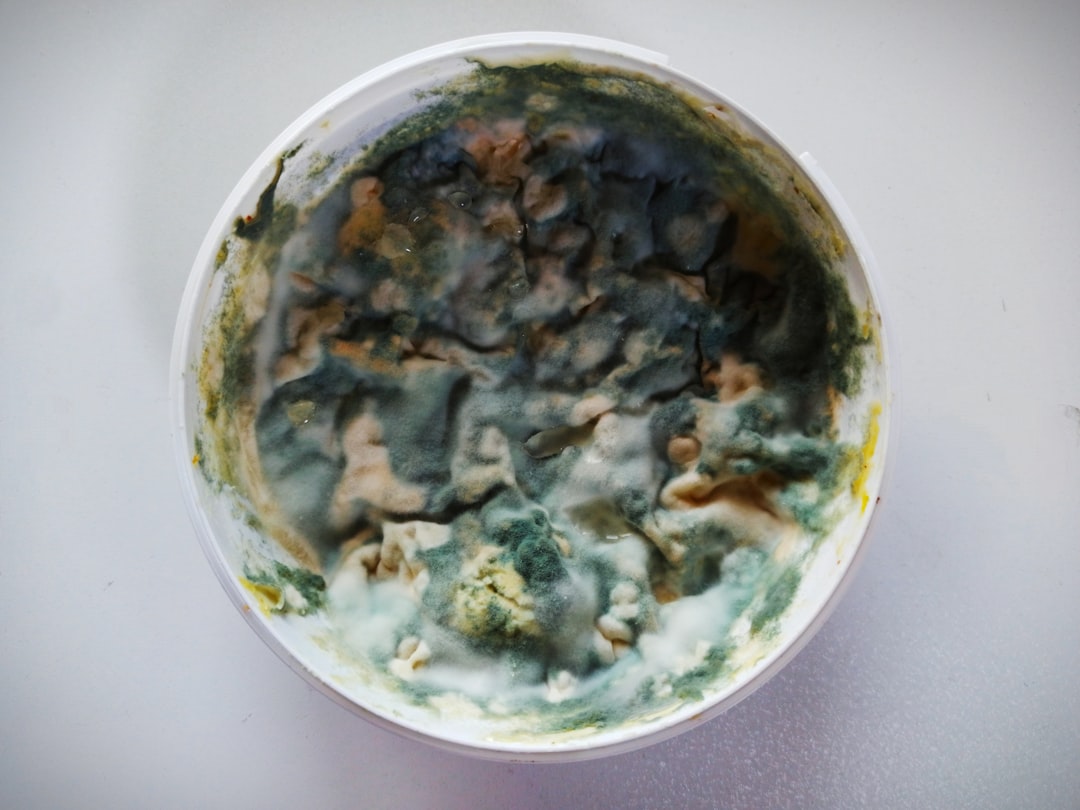Gray mold disease, scientifically known as Botrytis cinerea, is a fungal infection that affects a wide range of plants, particularly in humid and moist conditions. This pathogen is notorious for its ability to thrive in various environments, making it a significant concern for both commercial growers and home gardeners. The disease manifests primarily on flowers, fruits, and leaves, leading to substantial economic losses in agricultural settings.
The impact of gray mold disease extends beyond mere aesthetics; it can severely compromise plant health and yield. Infected plants may exhibit wilting, decay, and ultimately death if not managed effectively.
The disease is particularly problematic in greenhouse settings where humidity levels are often elevated, creating an ideal environment for the fungus to flourish. Understanding the nature of gray mold disease is crucial for effective management and prevention strategies.
Key Takeaways
- Gray mold disease is a fungal disease caused by Botrytis cinerea that affects a wide range of plants.
- The disease is caused by a combination of factors including high humidity, poor air circulation, and plant injuries.
- Common hosts for gray mold disease include strawberries, grapes, tomatoes, and roses.
- Environmental conditions favoring gray mold disease include high humidity, moderate temperatures, and poor air circulation.
- Symptoms of gray mold disease include grayish-brown fuzzy mold, wilting, and rotting of plant tissues.
Causes of Gray Mold Disease
The primary cause of gray mold disease is the fungus Botrytis cinerea, which is a saprophytic organism that can also act as a necrotroph, feeding on dead or dying plant material. This dual lifestyle allows it to thrive in various conditions, making it a formidable adversary for plant health. The spores of Botrytis cinerea are ubiquitous in the environment, often found in soil, air, and decaying organic matter.
These spores can easily be dispersed by wind, water, or human activity, leading to rapid infection of susceptible plants. In addition to the presence of the fungus itself, several factors contribute to the onset of gray mold disease. High humidity levels and poor air circulation are significant contributors, as they create an environment conducive to spore germination and fungal growth.
Overcrowding of plants can exacerbate these conditions, leading to increased moisture retention on leaves and flowers. Furthermore, physical damage to plant tissues—whether from mechanical injury or insect feeding—can provide entry points for the fungus, facilitating infection.
Common Hosts for Gray Mold Disease

Gray mold disease has a broad host range, affecting numerous plant species across various families. Some of the most commonly affected plants include strawberries, tomatoes, grapes, and ornamental flowers such as roses and geraniums. In strawberries, for instance, gray mold can lead to significant losses during harvest time, as the fruit becomes soft and mushy due to the decay caused by the fungus.
Similarly, in tomatoes, gray mold can affect both the fruit and foliage, leading to reduced yields and compromised quality. Ornamental plants are also highly susceptible to gray mold disease. Roses are particularly vulnerable during periods of high humidity when their blooms are fully open.
The presence of dew or rain can create ideal conditions for the fungus to invade the delicate petals. Other flowering plants like pansies and petunias can also fall victim to this disease, especially when grown in crowded conditions where airflow is limited. Understanding which plants are at risk is essential for implementing effective management strategies.
Environmental Conditions Favoring Gray Mold Disease
| Environmental Condition | Description |
|---|---|
| High Humidity | Gray mold disease thrives in high humidity environments, with optimal conditions between 85-100% relative humidity. |
| Moderate Temperatures | Temperatures between 68-77°F (20-25°C) are ideal for gray mold disease development. |
| Wet Conditions | Prolonged leaf wetness due to rain, dew, or irrigation can promote the growth and spread of gray mold disease. |
| Poor Air Circulation | Areas with limited air movement can create microclimates conducive to gray mold disease development. |
Gray mold thrives under specific environmental conditions that promote its growth and reproduction. High humidity is perhaps the most critical factor; relative humidity levels above 90% can significantly increase the likelihood of infection. This is often observed in greenhouses or during periods of prolonged rainfall when moisture accumulates on plant surfaces.
Additionally, temperatures between 60°F and 75°F (15°C to 24°C) are optimal for Botrytis cinerea growth, making spring and early summer particularly risky times for outbreaks. Poor air circulation exacerbates these conditions by preventing moisture from evaporating off plant surfaces. When plants are densely packed together or when foliage is allowed to remain wet for extended periods, the risk of gray mold increases dramatically.
Furthermore, practices such as overhead irrigation can contribute to prolonged leaf wetness, creating an ideal environment for spore germination and fungal proliferation. Recognizing these environmental factors is crucial for growers aiming to mitigate the risk of gray mold disease.
Symptoms of Gray Mold Disease
The symptoms of gray mold disease can vary depending on the host plant and the stage of infection. Initially, infected tissues may appear water-soaked or wilted, often accompanied by a softening of the affected areas. As the disease progresses, a characteristic grayish-brown mold may develop on the surface of flowers, fruits, or leaves.
This mold consists of dense clusters of fungal spores that can easily be dispersed by wind or water. In fruits like strawberries and tomatoes, gray mold can lead to rapid decay, rendering them unmarketable. In ornamental plants such as roses, the petals may become brown and mushy, eventually falling off the flower entirely.
Leaves may also exhibit dark brown lesions that can expand rapidly under favorable conditions. Recognizing these symptoms early is vital for effective management; once established, gray mold can spread quickly throughout a plant or even to neighboring plants.
Understanding the Life Cycle of Gray Mold Disease

The life cycle of Botrytis cinerea is complex and involves several stages that contribute to its ability to infect a wide range of hosts. The cycle begins with the production of conidia (asexual spores) that are released into the environment when conditions are favorable—typically during periods of high humidity and moderate temperatures. These spores can remain dormant until they encounter suitable host tissues.
Once a spore lands on a susceptible plant surface, it germinates under moist conditions and penetrates the plant tissue through natural openings or wounds. The fungus then begins to grow within the plant, feeding on its nutrients while producing enzymes that break down cell walls. As the infection progresses, more spores are produced and released into the environment, perpetuating the cycle.
This ability to produce large quantities of spores allows Botrytis cinerea to spread rapidly within a crop or garden setting.
Prevention of Gray Mold Disease in Plants
Preventing gray mold disease requires a multifaceted approach that addresses both environmental conditions and plant health. One of the most effective strategies is to maintain optimal growing conditions that minimize humidity levels around plants. This can be achieved through proper spacing between plants to enhance air circulation and reduce moisture retention on foliage.
Additionally, avoiding overhead irrigation methods can help keep leaves dry and less susceptible to infection. Regular monitoring for signs of gray mold is also essential in prevention efforts. Early detection allows for prompt action before the disease spreads extensively within a crop.
Implementing good sanitation practices—such as removing infected plant debris and avoiding overcrowding—can further reduce the risk of infection. By creating an environment that discourages fungal growth and promoting overall plant health through proper nutrition and care, growers can significantly mitigate the threat posed by gray mold disease.
Cultural Practices to Prevent Gray Mold Disease
Cultural practices play a crucial role in preventing gray mold disease by creating an environment that is less conducive to fungal growth. One effective practice is crop rotation; by alternating different crops in a given area each season, growers can disrupt the life cycle of Botrytis cinerea and reduce its prevalence in the soil. Additionally, selecting resistant varieties when available can provide an added layer of protection against this pathogen.
Proper pruning techniques are also vital in managing plant health and preventing gray mold outbreaks. By removing dead or diseased plant material and thinning out dense foliage, growers can improve air circulation around plants and reduce humidity levels within the canopy. Implementing mulching practices can help retain soil moisture while preventing splashing water that could spread spores onto plant surfaces during rainfall or irrigation events.
Chemical Control of Gray Mold Disease
Chemical control measures can be employed as part of an integrated approach to managing gray mold disease when cultural practices alone are insufficient. Fungicides specifically targeting Botrytis cinerea are available and can be effective in controlling outbreaks when applied correctly. It is essential to choose fungicides with different modes of action to prevent resistance development within fungal populations.
Timing is critical when applying chemical controls; fungicides should be applied preventively before symptoms appear or at the first sign of infection for maximum effectiveness. Additionally, following label instructions regarding application rates and intervals is crucial for achieving optimal results while minimizing potential harm to beneficial organisms in the ecosystem.
Biological Control of Gray Mold Disease
Biological control offers an environmentally friendly alternative to chemical fungicides in managing gray mold disease. This approach involves using natural predators or antagonistic microorganisms that inhibit the growth of Botrytis cinerea or outcompete it for resources. For instance, certain strains of Trichoderma fungi have been shown to effectively suppress gray mold by colonizing plant surfaces and preventing pathogen establishment.
Another promising avenue in biological control involves using beneficial bacteria such as Bacillus subtilis or Pseudomonas fluorescens that produce antimicrobial compounds capable of inhibiting fungal growth. These biological agents can be applied as foliar sprays or incorporated into soil treatments to enhance plant resilience against gray mold disease while promoting overall soil health.
Integrated Pest Management for Gray Mold Disease
Integrated Pest Management (IPM) provides a comprehensive framework for managing gray mold disease by combining multiple strategies tailored to specific growing conditions and crop types. This approach emphasizes prevention through cultural practices while incorporating chemical and biological controls as needed based on monitoring data. Regular scouting for symptoms allows growers to make informed decisions about intervention timing and methods.
By integrating resistant varieties into crop rotations alongside cultural practices such as proper spacing and sanitation measures, growers can create an environment less conducive to gray mold development. Additionally, employing biological controls alongside targeted fungicide applications can enhance overall efficacy while reducing reliance on chemical inputs. In conclusion, managing gray mold disease requires a holistic understanding of its biology, environmental conditions favoring its growth, and effective prevention strategies tailored to specific crops and growing environments.
By employing an integrated approach that combines cultural practices with chemical and biological controls, growers can effectively mitigate the impact of this pervasive fungal pathogen on their crops.
Gray Mold Disease, also known as Botrytis cinerea, can be a common issue for gardeners. One way to prevent this fungal disease is by properly caring for your plants and ensuring they have good air circulation. For more information on how to propagate plants like the prickly pear cactus or the purple bearded iris, check out

